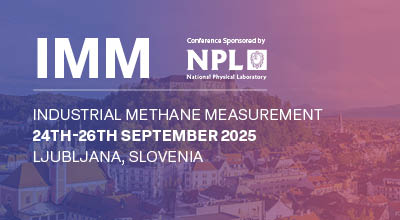| Abstract Title: | Airborne Methane Plume Analysis using TIR Hyperspectral Imaging: Past, Present and Future. |
| Presenter Name: | Mr Jean-Philippe Gagnon |
| Co-authors: | Mr Pierre-Yves Foucher Mr Xavier Watremez Ms Stephanie Doz Dr Martin Lariviere-Bastien Dr Martin Chamberland |
| Company/Organisation: | Telops |
| Country: | Canada |
Abstract Information :
Numerous applications from defense to geology use thermal infrared (TIR) hyperspectral sensor such as the Telops Hyper-Cam to detect, to identify and to quantify solid, liquid and gas. The Hyper-Cam Methane is a special version dedicated to methane gas. This powerful hyperspectral imager allows to analyze methane leak from airborne imagery. In this paper, we introduce the airborne Hyper-Cam methane, its capacities and challenges. We discuss the capabilities to detect and quantify methane leaks from safe distance and to survey rapidly very large areas. We present several test campaigns which occurred in the previous years, especially the last one conducted in a collaborative project with TOTAL and ONERA (Office national d'etudes et de recherches aerospatiales, The French aerospace lab) during the summer of 2018. Finally, we discuss the future of this technology regarding the capabilities to reduce its size and cost, and the capability to be carried by a UAV (unmanned aerial vehicle).
Fourier-transform infrared spectroscopy (FTIR) has been widely used for the remote detection and analysis of gas, both in the laboratory and in the field. The TELOPS Hyper-cam, a hyperspectral imager based on FTIR technology, has been used to detect, discriminate and quantify different gases. The Telops Hyper-Cam methane is a FTIR passive imager working in the specific 7.4 to 8.3 µm band (1350-1205cm-1) and thus effective to detect methane (CH4) peak absorption at 1306cm-1. Using this system, scientists were thus able to measure natural methane emissions or methane leaks. This lightweight and compact imaging spectrometer has been mounted on a stabilized platform for airborne measurement. With accurate geolocalization, this system allows precise gas mapping, covers large areas efficiently from a safe distance, and is not limited by ground topography. Moreover, gas quantification is possible through IMGSPEC a dedicated algorithm developed by ONERA. The quantification capability was recently challenged during a two weeks test campaign conducted by TOTAL at its facilities at Lacq (France). This campaign aimed at testing several technologies to detect methane leaks, which can prove useful for environmental monitoring and emergency situations. Though this technology allows to monitor methane plumes at high spatial resolution, the system provides a real-time quantitative concentration map (ppm.m) and a good estimation of the gas flow rate from less than 0.5 up to 300g/s. Although the TIR hyperspectral imaging has proven effective, some challenges remain. We will discuss the future of the TIR hyperspectral imaging technology, especially the possibilities offered by new detectors or miniaturization, and the UAV compatibility.

